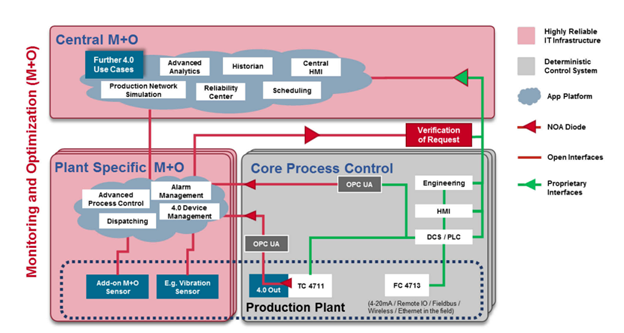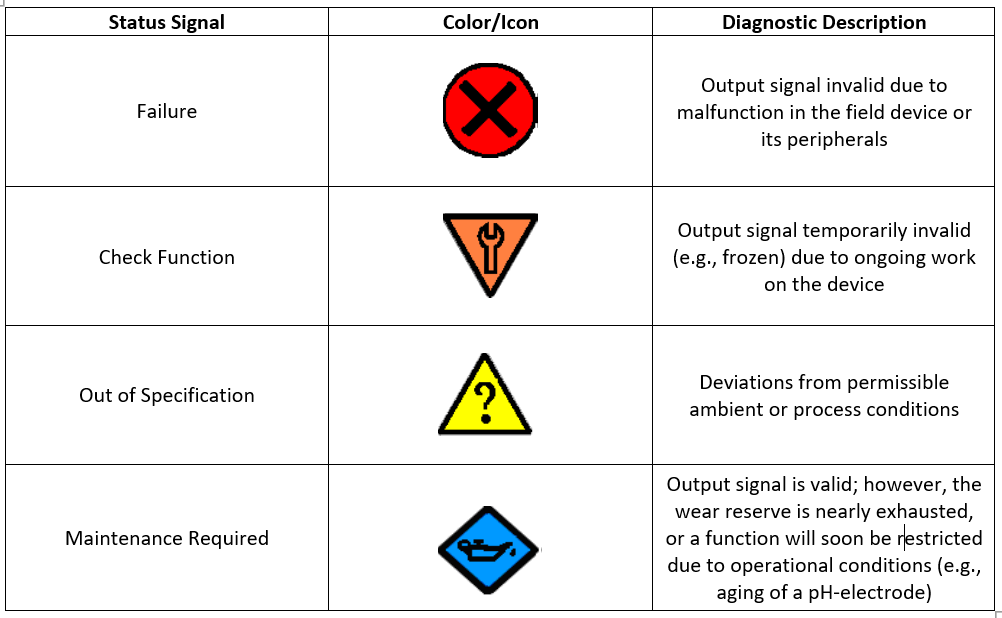There are hundreds of smart instruments including sensors and final control elements installed in medium-and large-size industrial plants which are used for control, optimization, or process monitoring. Smart instruments are microprocessor-based devices that are equipped with additional digital processing facilities to provide extra functionality such as compensation, self‑checking, diagnostics, and even to perform control functions within the device. These functionalities, especially the diagnostics feature, can be leveraged to improve instrumentation maintenance and reduce unplanned downtime.
Intelligent device management (IDM) is a set of tools that can be installed on process control networks (PCNs) or on plant’s business network to collect smart instruments diagnostics info. It can be used to improve operations and maintenance plans. However, identifying and mapping diagnostics info from various instrument models and vendors can be challenging and would require a lot of engineering hours; NAMUR NE-107 can be the solution.
NAMUR is an international user association of automation technology and digitalization in the process industries. It has several working areas with numerous working groups in each area and has released numerous guidelines under each working area. NAMUR NE-107 is one of the guidelines and its focus is on “self-monitoring and diagnosis of field devices.”
Per NAMUR NE-107, instrument health diagnostics are collected under four main categories called the NAMUR status: Failure, Check Function, Out of Specification, and Maintenance Required.
For example, all diagnostic info of a control valve now can be collected under the four NAMUR categories.
Intelligent Device Management collects smart instrument diagnostics and provides plant operators and reliability teams with instrument health dashboards based on actual info collected from field devices. The instrument health feature enables plant maintenance managers and technicians to see the overall plant sensor health picture and drill down to individual sensor alerts, error codes, and potential remedies based on NAMUR NE-107.
As mentioned, the IDM can be installed on process control network or on monitoring and optimization (M+O) layers as per NAMUR Open Architecture (NOA). The NOA offers a framework to implement innovative solutions both for new (Greenfield) as well as existing (Brownfield) plants. The main advantage of the NOA approach is that the process control core remains largely unaffected, which makes NOA especially appealing for Industry 4.0 innovations in brownfield plants.
 Figure 2: NAMUR Open Architecture (NOA)
Figure 2: NAMUR Open Architecture (NOA)
Smart instrument integration into the IDM can be done in a few ways, either by direct connection through WirelessHART, or connection over OPC unified architecture (UA). On the communication side, there are various field device communication protocols, the most popular being HART, PROFIBUS, and FOUNDATION Fieldbus. A smart instrument can provide multiple process variables as well as plenty of diagnostic info regardless of the communication protocol. This info can be utilized to improve production, maintenance, and reliability.
IDM can help operations to reduce unplanned downtimes by providing instrumentation health notifications. With development in field device technologies as well as NOA frameworks, integration of field devices into NOA M+O layers have become easier than ever.
If you have any questions or comments, please reach out through my LinkedIn account: Bakhtiar Pourahmad P.Eng, PMP | LinkedIn
References
NAMUR NE-107
NAMUR Open Architecture (NOA)





